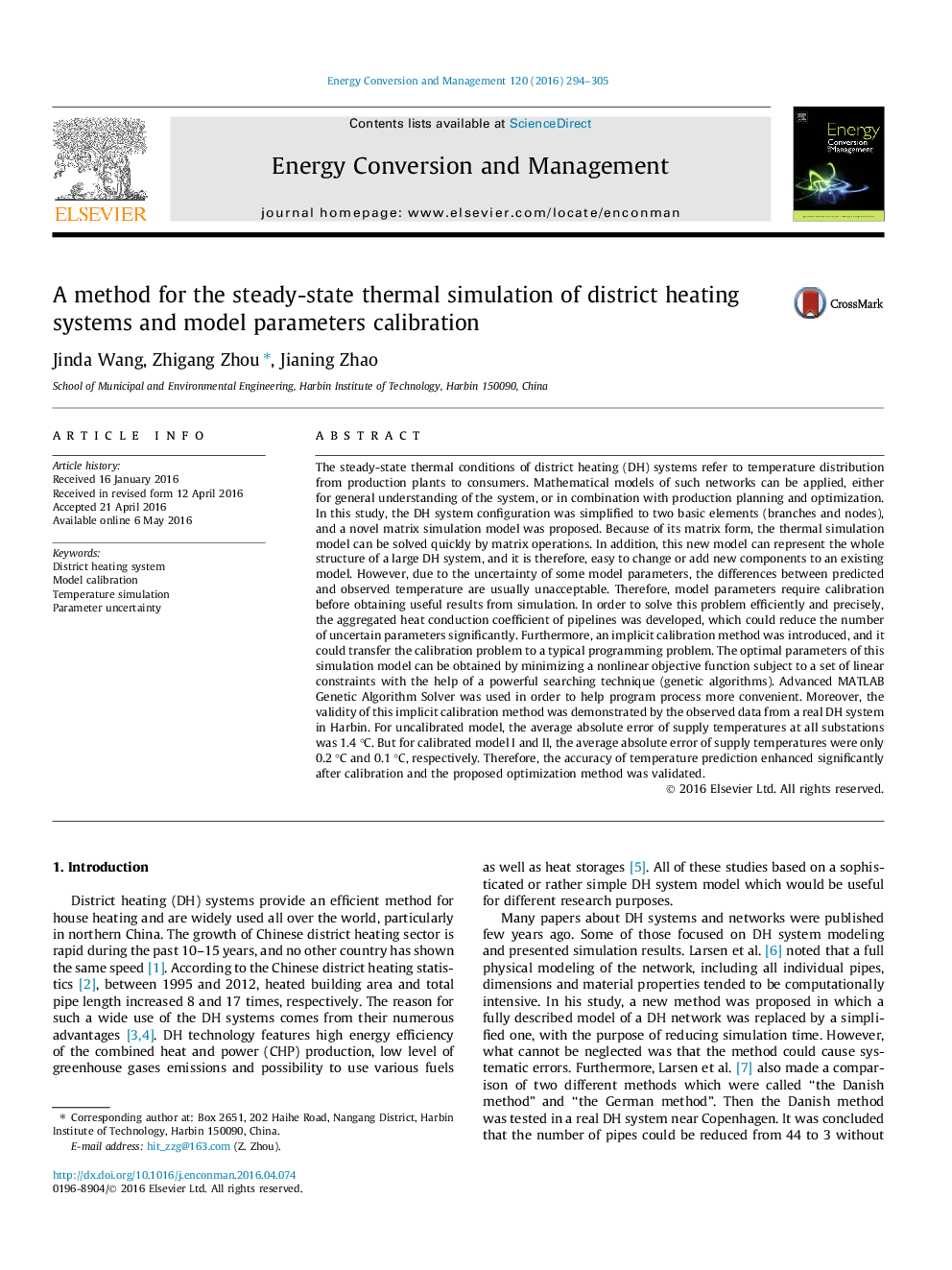| کد مقاله | کد نشریه | سال انتشار | مقاله انگلیسی | نسخه تمام متن |
|---|---|---|---|---|
| 7160441 | 1462842 | 2016 | 12 صفحه PDF | دانلود رایگان |
عنوان انگلیسی مقاله ISI
A method for the steady-state thermal simulation of district heating systems and model parameters calibration
ترجمه فارسی عنوان
یک روش برای شبیه سازی حرارتی حالت پایدار سیستم های حرارت مرکزی و کالیبراسیون پارامترهای مدل
دانلود مقاله + سفارش ترجمه
دانلود مقاله ISI انگلیسی
رایگان برای ایرانیان
کلمات کلیدی
سیستم گرمایش مرکزی، کالیبراسیون مدل، شبیه سازی دما، عدم قطعیت پارامتر
موضوعات مرتبط
مهندسی و علوم پایه
مهندسی انرژی
انرژی (عمومی)
چکیده انگلیسی
The steady-state thermal conditions of district heating (DH) systems refer to temperature distribution from production plants to consumers. Mathematical models of such networks can be applied, either for general understanding of the system, or in combination with production planning and optimization. In this study, the DH system configuration was simplified to two basic elements (branches and nodes), and a novel matrix simulation model was proposed. Because of its matrix form, the thermal simulation model can be solved quickly by matrix operations. In addition, this new model can represent the whole structure of a large DH system, and it is therefore, easy to change or add new components to an existing model. However, due to the uncertainty of some model parameters, the differences between predicted and observed temperature are usually unacceptable. Therefore, model parameters require calibration before obtaining useful results from simulation. In order to solve this problem efficiently and precisely, the aggregated heat conduction coefficient of pipelines was developed, which could reduce the number of uncertain parameters significantly. Furthermore, an implicit calibration method was introduced, and it could transfer the calibration problem to a typical programming problem. The optimal parameters of this simulation model can be obtained by minimizing a nonlinear objective function subject to a set of linear constraints with the help of a powerful searching technique (genetic algorithms). Advanced MATLAB Genetic Algorithm Solver was used in order to help program process more convenient. Moreover, the validity of this implicit calibration method was demonstrated by the observed data from a real DH system in Harbin. For uncalibrated model, the average absolute error of supply temperatures at all substations was 1.4 °C. But for calibrated model I and II, the average absolute error of supply temperatures were only 0.2 °C and 0.1 °C, respectively. Therefore, the accuracy of temperature prediction enhanced significantly after calibration and the proposed optimization method was validated.
ناشر
Database: Elsevier - ScienceDirect (ساینس دایرکت)
Journal: Energy Conversion and Management - Volume 120, 15 July 2016, Pages 294-305
Journal: Energy Conversion and Management - Volume 120, 15 July 2016, Pages 294-305
نویسندگان
Jinda Wang, Zhigang Zhou, Jianing Zhao,
